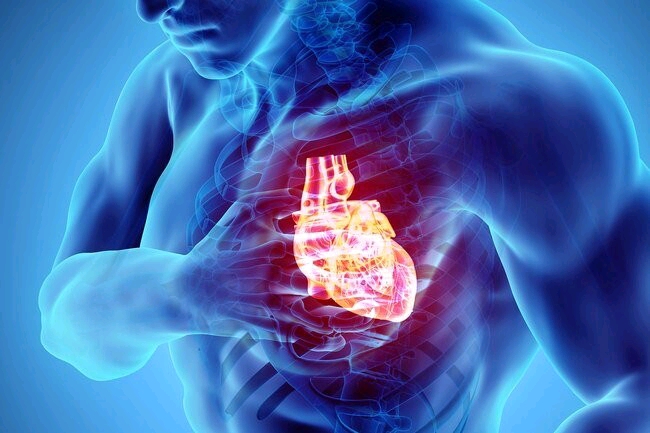All you need to know about cardiac arrest
Nigeria
4
 A cardiac arrest occurs when the heart stops pumping blood around the body. Here we explain the signs, symptoms and causes of a cardiac arrest and explain what to do in the event of this medical emergency.
A cardiac arrest occurs when the heart stops pumping blood around the body. Here we explain the signs, symptoms and causes of a cardiac arrest and explain what to do in the event of this medical emergency.Cardiac arrest is a serious cardiac event that occurs when the heart stops pumping blood around the body. If you suffer a cardiac arrest you will stop breathing and lose consciousness almost immediately. Unless action is taken within minutes, cardiac arrest will be fatal.
If you witness a cardiac arrest, you can increase the person’s chances of survival by calling 111 immediately, doing cardiopulmonary resuscitation (CPR) and using an automated external defibrillator (AED).
What causes cardiac arrest?
The most common cause of a cardiac arrest is ventricular fibrillation (VF). In VF, the electrical activity of the heart becomes erratic, causing the heart to quiver or ‘fibrillate’ instead of beating normally. VF can be caused by a number of different heart-related problems, including:
-Heart attack
-Coronary artery disease (atherosclerosis)
-Heart failure
-Some heart rhythm conditions, such as Long QT syndrome.
Ventricular fibrillation can also happen as a result of events unrelated to heart disease such as:
-Suffocation or choking
-Electrocution
-Loss of a lot of blood such as haemorrhage
-Allergic reaction
-Drowning
-Drug overdose.
What are the signs and symptoms of cardiac arrest?
For many people, a cardiac arrest comes without any warning signs. However, some people do experience some warning signs before a cardiac arrest. These can include:
-Chest pain
-Dizziness
-Palpitations
-Fainting
-Breathlessness.
Someone who has already had a cardiac arrest will be:
-Unconscious
-Unresponsive
-Not breathing.
How is cardiact arrest treated?
A cardiac arrest is a medical emergency which is often fatal if not treated quickly with a combination of cardio pulmonary resuscitation (CPR) and defibrillation.
CPR is a combination of rescue breathing and chest compressions. It provides oxygen to the lungs and keeps oxygenated blood circulating until an effective heartbeat and breathing can be restored. By knowing and performing CPR, you may save a life.
Defibrillation is the use of an electric shock through the chest wall to correct the VF. It is carried out using a machine called a defibrillator.
Members of the public can access community defibrillators (known as Automated External Defibrillators (AEDs) at thousands of locations across New Zealand. The machines provide automated instructions on how to use them.
The charity St John provides a step by step guide to CPR and use of AEDs. They also provide the infromation on a free app for iOS devices.
If a cardiac arrest occurs in hospital, a clinical team (often referred to as the "crash team") will be called to carry out CPR and defibrillation.
What happens after a cardiac arrest?
Long-term treatment will depend on the cause of the cardiac arrest.
If the cardiac arrest is related to a heart condition, tests will be required and treatment will depend on the underlying condition.
In some cases the condition will be managed by medication. Some people may have an Implantable Cardioverter-Defibrillator (ICD) inserted - a device which detects abnormal heart rhythm and shocks it back to a normal rhythm when necessary. Other people may require angioplasty, bypass surgery or other corrective surgery.
What’s the difference between a heart attack and a cardiac arrest?
A heart attack is not the same as a cardiac arrest. They are two different types of cardiac event.
A cardiac arrest occurs when the heart stops pumping blood around the body. Normal breathing stops and consciousness is lost.
A heart attack occurs when a coronary artery becomes blocked, preventing blood flow to part of the heart muscle. During a heart attack a person remains conscious and keeps breathing.
Sometimes a heart attack can cause a cardiac arrest. This is because a person who is having a heart attack may develop a dangerous heart rhythm, which causes a cardiac arrest. A heart attack and a cardiac arrest are both emergency situations. Call 111 straight away.
#sportsNews
Comments (4)
0/500
New Comments(4)
AmosCodeX
lucy ashley
yap
Toluwannyy
@lucy ashley:
yeah[0x1f640] you r welcome
lucy ashley:
thanks for letting me know,ita very dengerous
lucy ashley
thanks for letting me know,ita very dengerous
Cardiac[0x1f633][0x1f633][0x1f633]